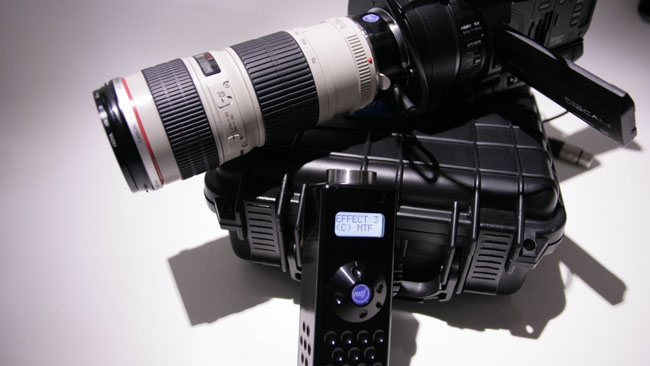
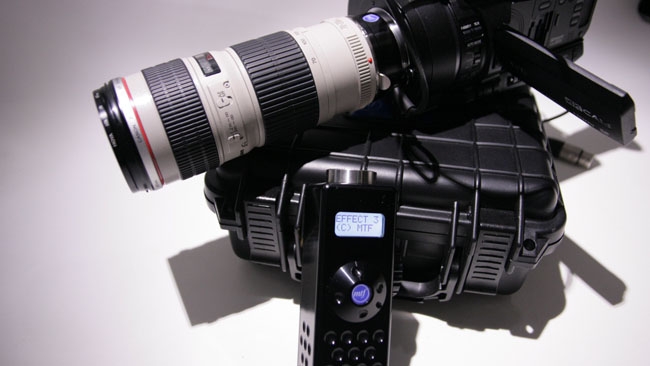 MTF Effect 3 on JVC GY-LS300 with Canon EF 70-200mm f4L USM Zoom
MTF Effect 3 on JVC GY-LS300 with Canon EF 70-200mm f4L USM Zoom
Phil Rhodes tries out MTF's Effect lens controller on the JVC GY-LS300 camera and finds it a good solution for anyone with an already significant investment in EF glass.
There's a big problem with lenses. The sort of easy-to-use, properly mechanical designs that many people favour range from very expensive to very very expensive, and the more affordable stuff tends towards the much larger stills market where the economies of scale are more favourable. We've recently said nice things about certain cameras on the basis that they're compatible with a wide range of lenses – but what that means, in general, is that the camera's mount is shallow enough that there's room between it and a lens for a mechanical adaptor.
A particularly laudable current example of this is JVC's highly-flexible GY-LS300 camera. The broad compatibility of the micro four-thirds mount is maintained despite the full-sized Super35 sensor, with JVC's designers overcoming the resulting engineering difficulties created by the proximity of the electronic lens control contacts to the edge of the sensor area. The variable sensor windowing combines with the shallow mount to create a camera capable of shooting with practically any lens in existence.
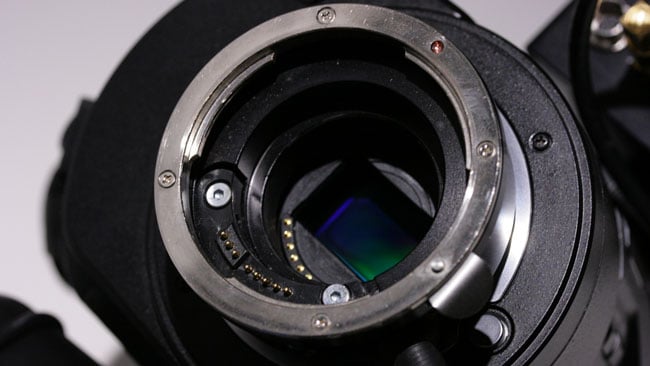
MTF Effect 3 mount adaptor. The inner, unused contacts are those of the JVC GY-LS300's micro-four-thirds mount
One thing the mighty LS300 can't do is control lenses according to Canon's tricky EOS design. The associated EF lens mount was possibly the first to completely do away with mechanical connections between the lens and camera, replacing everything with electronic communication and servo actuators in the lens. The problem this creates, and a problem which is now infamous, is that it is impossible to control the aperture setting of the lens without providing the appropriate electronic interface. Canon has been famously resistant to third-party implementations of the protocol and most of those which exist are the result of diligent reverse-engineering. This does raise the spectre of compatibility problems, although that's something that Sigma has reportedly already encountered in its range of EF-compatible lenses and it doesn't seem to have created a serious problem. MTF is upfront about this, and emphasises that the process of software updates to accommodate new lenses will be ongoing.
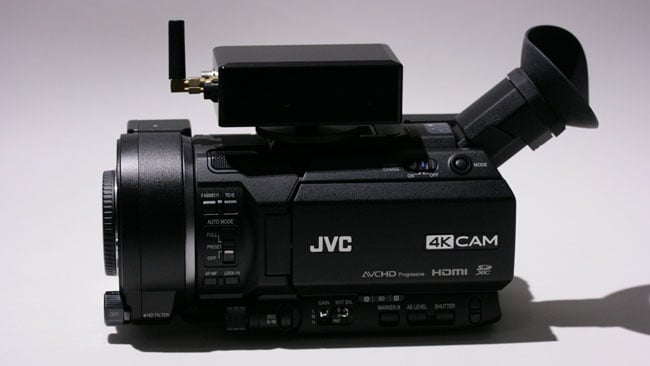
MTF Effect 3 receiver on GY-LS300 showing antenna
One of the issues of creating something like MTF's Effect lens controller, which implements the Canon protocol, is simply one of having physical space to insert the relevant electrical contacts. Since the GY-LS300's shallow mount would require a mechanical adaptor to accept EF glass in any case, there's room to insert the appropriate electronics. MTF Services has been well-known as a manufacturer of lens adaptors for a while, and the Effect controller is now it its third edition. It provides both aperture and focus control of EF lenses, with the f-stop variable in one-eighth stop increments. The unit also provides power for image stabilisation when using lenses which offer it.
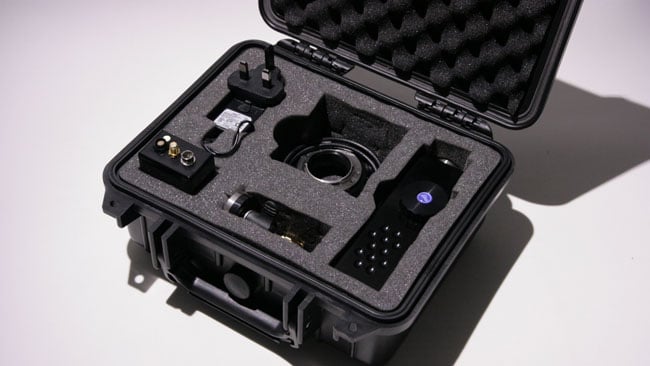
The MTF Effect hardware complete in its case
The two devices must theoretically be transceivers, as they both seem to know when it's they're in successful communication with the each other, but they're functionally separable into the handheld transmitter and camera-mounted receiver. Both rely on compact antennae which are removable for storage and the whole thing comes in a neat little Peli-style case. The receiver has a built-in hotshoe mount with a large-diameter clamping nut which makes it easy to mount, although some configurations will probably want it on 15mm rods and that's fairly easy to achieve with common accessories. The transmitter has two rotary controls for iris and focus, and a display indicating stop and the current focal length of zooms.
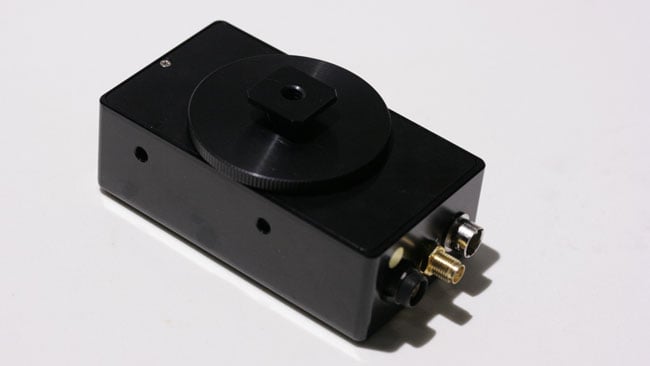
Receiver with shoe mount and large-diameter clamping nut
It's worth a few words to note that the Effect hardware is very nicely made, with machined metal enclosures and quality connectors. Even the display is a tasteful choice in black and white. The power switch is sensibly recessed in the bottom of the transmitter to avoid accidental actuation and the mount itself, the accuracy of which is of key importance, is a nice tight fit. People have complained that MTF mounts can feel overtight, but frankly that's a much more welcome idea than any sense of slackness which might risk a less-than-precision fit. The mounts are available to suit things other than the micro four-thirds mount of the JVC camera we see here, including the Sony E, FZ, and C mounts, and a bolt-on mount for the AJA Cion camera.
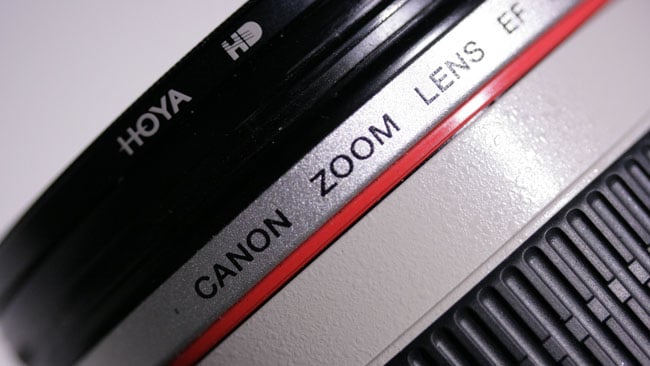
L-series lenses often have the best servo performance
The whole approach is necessarily dependent on the lenses themselves. MTF is clear that the most reliable option is Canon's own L series, which tend naturally toward the best build quality and the smoothest response in both focus and iris. The mechanisms in these lenses are not really designed to produce the sort of results we see from the sort of bolt-on lens control systems as they're used on high-end feature films. Some of them will do that, but not all. Particularly, it's notable that the MTF Effect controller doesn't provide a readout of focus distance, simply because the Canon EF lens designs don't actually have any requirement to do that. On a stills camera, the focus must be shifted closer or further until the image is sharp, but there is no requirement to be able to turn that result into an accurate distance measurement. Naturally this limits the use of it as a traditional remote focus device with the use of focus marks, but it's fully effective in more on-the-fly circumstances where focus must be controlled with reference to a monitor.
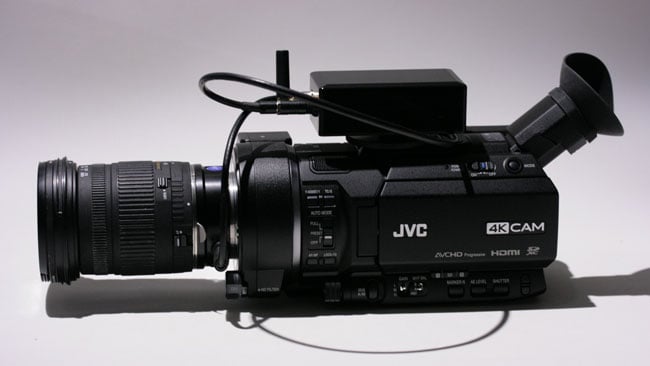
MTF Effect 3 on JVC GY-LS300 with Sigma DC 17-70mm f2.8-4.5
That unavoidable limitation aside, MTF's Effect series has always performed nicely, and now it does so wirelessly. At £1800 plus VAT it's not a cheap device, but given that it does such a specific job in such a specific field, without the support of Canon, the price isn't unreasonable. There are, after all, L-series lenses worth more than that, and if that's the price of their usability on a video camera, then that might be a price well worth paying. Perhaps nobody's ever going to plan from scratch to build a collection of EF glass for a non-EF camera, but for anyone with a pre-existing lens investment it makes perfect sense.
Tags: Production


Comments